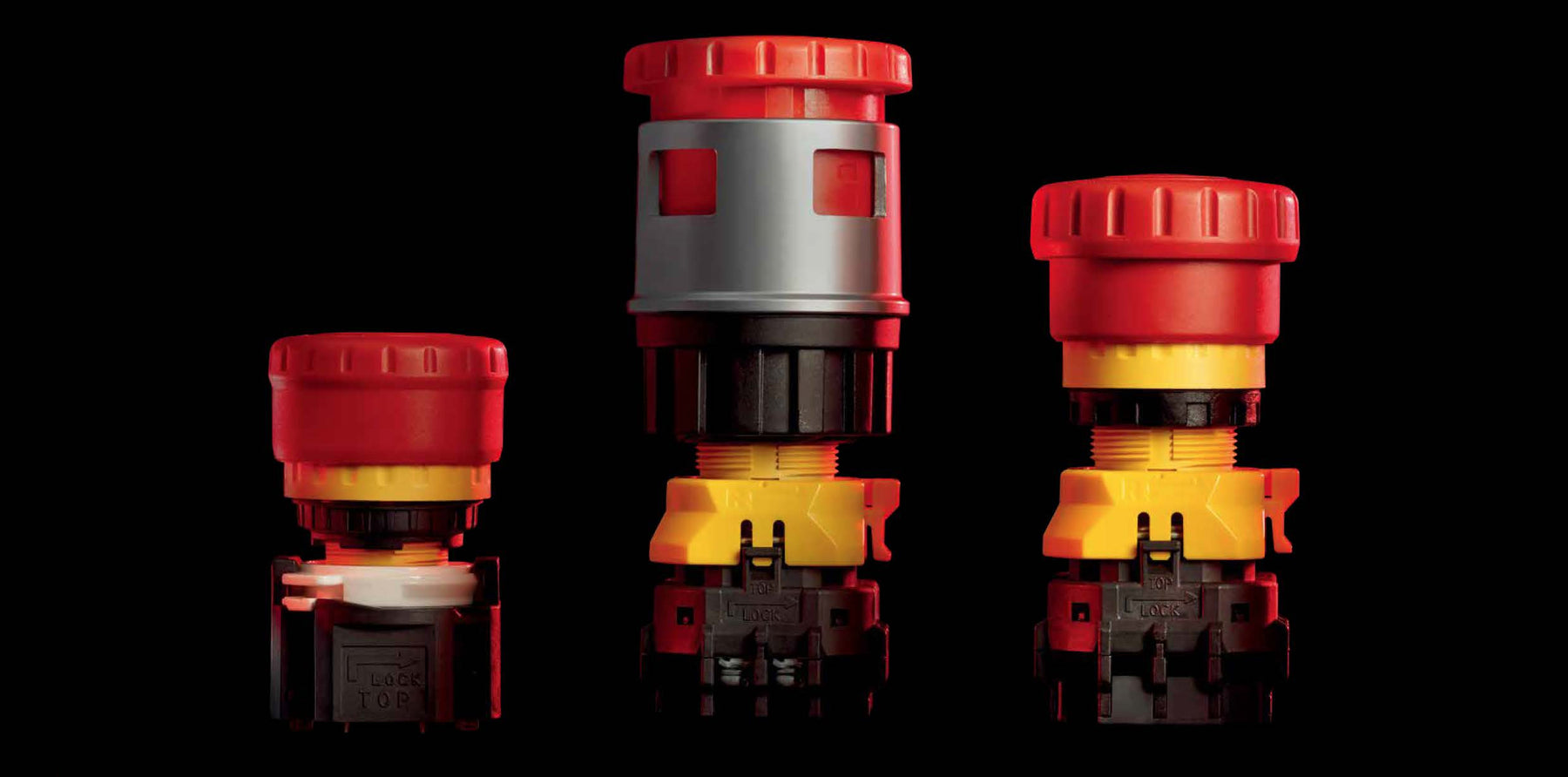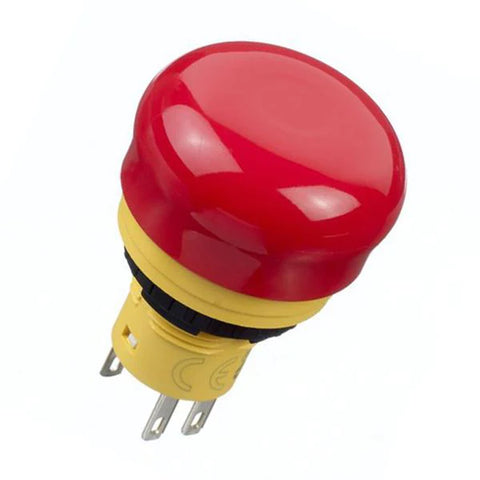
Ultimate Guide To Emergency Stop Switches!
What is an emergency stop switch?
Emergency stop switches or e-stops for short are a safety device used to quickly cut power to machinery, reducing the risk of injury. The buttons are designed to be easily operated and must be red with a yellow background or housing. Some countries and applications require an e-stop switch as a legal requirement, making it a critical component across a diverse range of applications.
E-stop switches come in a wide range of designs including illumination, lockable, hermetically sealed, explosion proof etc. This ensures no matter the application, there is always a suitable solution!
How do emergency stop switches work?
Emergency stop buttons are ergonomically designed for ease of use and are operated by pressing. When the button is pressed this 'breaks' the electrical circuit and prevents power passing through to the machine, causing it to stop. Most switches can then be reset by twisting the button which 'makes' the electrical circuit again. Whilst this is the most common type, others may reset by pulling or using a key.
The IDEC X-series range are the safest e-stops in the world featuring a fail safe design which breaks the electrical circuit if the switch is not properly installed or is damaged.
Different types of emergency stop switches
Mushroom buttons are the most common type of e-stop switch which feature a mushroom shape allowing the actuator to be large in diameter and easy to operate. The buttons come in various sizes from 29mm to 60mm in diameter and commonly feature a knurled design. In the UK it is a legal requirement that all emergency stop switches feature a red mushroom head.
Key release buttons are the same as standard mushroom buttons except they require the use of a key to reset the switch. This prevents unauthorised reset of the switch and ensures the machine can be examined before resuming operation again.

illuminated buttons are commonly found in poor lighting applications. The most common types feature a light inside the mushroom button or a ring illumination on the switch background.
Small e-stops are suitable for applications with shallow behind panel depths and panel cut-outs as low as 16mm. The IDEC X6 series features the shortest depth behind the panel in its class and requires a 16mm cut-out. The switch features IDEC's fail safe technology and its sleek design makes it a popular choice.
Installing emergency stop switches
It is important to consider the location the e-stop switch will be fitted to. The location should be visible and easy to reach in case of an emergency.
E-stops are usually designed for panel mounting and are available in a range of panel cut-out diameters for your applications. The most common is 22mm which will fit industry standard control station cut-outs. Surface mount designs are mounted onto a yellow housing and are mounted directly onto the machine.
The switches come with normally closed or normally open contacts depending on the application. Kill switches use normally closed contacts which open when the button is pressed. The contacts are available with screw or push-in terminals, suitable for both solid or stranded cables.
Did you know? push-in terminals save up to 55% time compared to screw terminals.






Leave a comment